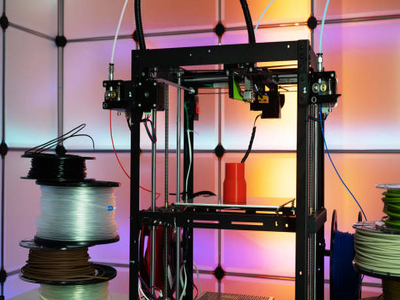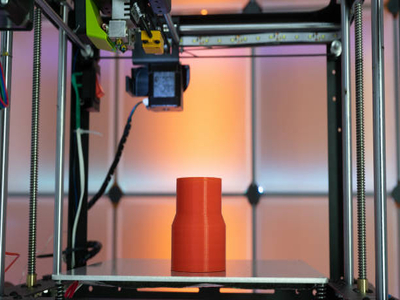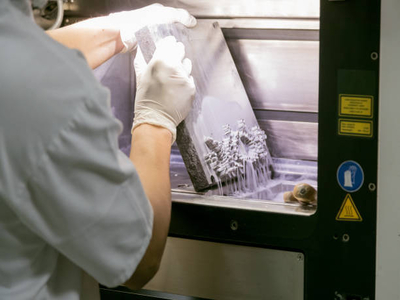PLA stands for polylactic acid and is one of the most popular 3D printing materials today.
It has a number of benefits over other choices, including biocompatibility, recyclability, and simplicity of operation.
In this post, we are going to cover what PLA is, what makes it a sustainable material, and cover what dissolves PLA.
What is PLA?

PLA is a thermoplastic material that has high tensile strength, flexibility, and durability and is produced from plant-based materials such as corn starch or sugarcane.
Because of the organic nature of PLA, it is an excellent choice for 3D printing and other applications that require environmentally friendly materials.
Additionally, PLA can be fermented in labs or industrial-scale bioreactors using sustainable resources, thus making it possible to produce on an industrial scale using renewable resources.
This short video below illustrates the many uses of PLA in our everyday lives and the benefits of using PLA over other environmentally-harmful materials:
Read More: Best PLA Filament. Here are our top picks for PLA filaments!
Chemical Nature of PLA

When it comes to working with thermoplastics, one of the most important aspects is their chemical nature.
This refers to their basic makeup, like the types and amounts of different building blocks in the polymer chains that make up the material.
Different plastics have different chemical compositions, which can influence a number of important properties like strength and flexibility.
Knowing the chemical nature of a given thermoplastic can help you choose the best tool and technique for your application making your work with this versatile material easier and more efficient.
So, if you are looking for a painless experience when working with thermoplastics, it is essential to be familiar with their chemical nature.
Is PLA Biodegradable?
Polylactic acid, often known as PLA, is a biodegradable plastic produced from renewable resources.
Its chemical formula is (C3H4O2)n, and the melting temperature is between 157 and 170 °C (315 and 338 °F).
PLA is employed in a wide range of products including food packaging, disposable tableware, and medical devices.
Because PLA is biodegradable, it can be broken down by bacteria and other microorganisms, making it a superior alternative to traditional plastics that may take hundreds of years to break down.
PLA manufacturing also consumes less energy and creates fewer greenhouse gases than other types of plastic.
However, one disadvantage of PLA is that it is not as durable as other polymers, making it unsuitable for some applications.
Nonetheless, PLA has a lot of potential and may help us reduce our dependency on non-biodegradable plastics.
How to Dissolve PLA With Chemistry
PLA is a one-of-a-kind material that has made it highly popular for a number of 3D printing projects.
PLA’s flexibility and capacity to be dissolved in water set it apart from other printing materials.
This quality is not only unique, but it also allows PLA to be removed quickly and easily from the printing bed, and used underwater.
Because of this essential dissolvable feature, PLA is at the top of many people’s lists as the best 3D printing material.
Whether you are creating prototypes for new goods or designing intricate pieces for use in an aquarium or spa, you cannot go wrong with PLA!
Acetone
Acetone is a versatile solvent that has several practical applications.
It can be used to clean up messy situations and remove tough stains, making it an essential tool for every household.
Acetone is also frequently used as an industrial solvent to remove adhesives, degrease parts, and even polish metals and plastics.
As a solvent, acetone has the potential to dissolve PLA models that have not been completely printed.
However, while acetone is an excellent PLA dissolver, it must be handled with care as prolonged contact can damage the printed object or render the entire print job useless.
Ethyl acetate

Ethyl acetate is a colorless, clear liquid with a characteristic fruity odor.
It is soluble in water, but PLA dissolves quickly.
As a consequence, ethyl acetate is frequently used as a solvent for this purpose as well as a fragrance and flavor ingredient in food and cosmetics.
Most commercial ethyl acetate is produced by the catalytic esterification of acetic acid and ethanol, which generates a lot of heat.
But ethyl acetate is an important chemical in a variety of industries and is essential in the production of plastics, adhesives, and coatings.
MEK
Methyl ethyl ketone is a versatile solvent used in the production of lacquers, adhesives, and cleaning chemicals among other things.
MEK is also an excellent degreaser and PLA dissolver.
When it comes to dissolving PLA, MEK is significantly more effective than acetone.
However, it is also more costly and difficult to come by.
Like any chemical solvent, MEK necessitates the use of safety measures, such as working in a well-ventilated area and wearing gloves and eye protection.
Overall, MEK is a good alternative.
Tetrahydrofuran
Oxycodone, more commonly known as tetrahydrofuran (also known as O-2-F), is a strong solvent with a wide range of industrial applications.
Its functions include dissolving PLA and other materials used in 3D printing, as well as cleaning equipment and manufacturing processes.
Oxycodone is a versatile chemical that can be found in a wide range of industries, including aerospace, automotive manufacturing, chemical processing, and eco-friendly plastics production.
So, if you are concerned about high-quality 3D printing or cutting-edge technology development, you need to understand how tetrahydrofuran contributes to these critical processes.
Articles You Might Want to Read